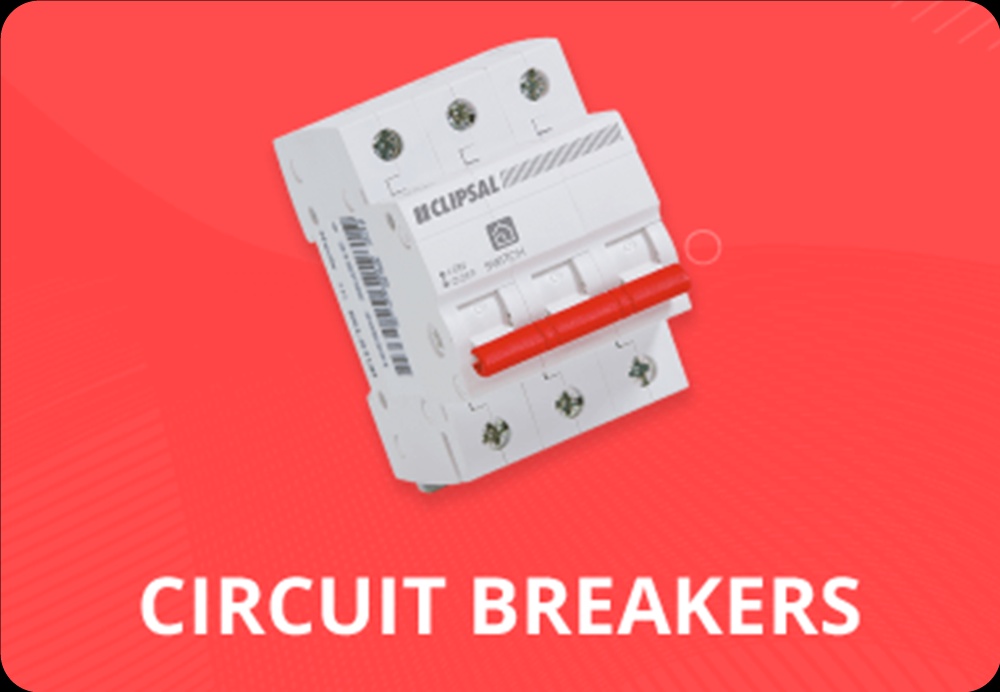To prevent electrical overloads and short circuits, circuit breakers are vital safety features of electrical systems. In order to keep electrical systems safe and avoid accidents, it is crucial to know how circuit breakers function. Electrical circuit breakers are switching devices that, in the event of a fault—such as an overload or short circuit—automatically cut power to the circuit. It prevents electrical equipment damage and fires by acting as a safety net.
How Do Circuit Breakers Work?
- Detection of Fault
The current running through the circuit exceeds the breaker's rated capacity when an electrical circuit fault, such as an overload or short circuit, occurs. This overcurrent is detected by a sensor device built into the circuit breaker.
- Tripping Mechanism Activation
The circuit breaker's tripping mechanism is engaged the moment it detects the excess current. Depending on the kind of circuit breaker, this mechanism might be thermal or magnetic.
- An internal bimetallic strip in a thermal circuit breaker becomes heated up as a result of the excess current. The strip will eventually bend, which will trigger a device that opens the circuit and cuts off current flow.
- Magnetic circuit breakers work by creating a magnetic field around an internal coil using surplus electricity. A mechanism that opens the circuit and stops the flow of electricity is triggered by this magnetic field.
- Interruption of Current Flow
When the circuit breaker's tripping mechanism is engaged, it swiftly opens the circuit, cutting off current flow. By taking this measure, more harm to the circuit and electrical components may be avoided. The electrical system may be protected against overheating and fires by cutting off the current as well. Because of how fast the circuit breaker reacts, the circuit and any devices linked to it are protected.
- Resetting the circuit breaker
Restoring electricity to the circuit requires clearing the fault and then manually resetting the circuit breaker. It is common practice to use a switch or the breaker's button for this purpose.
Types of Circuit Breakers
Different varieties of circuit breakers are available, each tailored to a particular use case and working conditions. If you want to choose the correct circuit breaker for your purposes, you need to know what kinds there are. In this article, we'll go over the many kinds of circuit breakers:
- Miniature Circuit Breakers (MCBs)
In order to prevent overloads and short circuits, MCBs are widely installed in both commercial and residential structures. You can easily reset them after tripping, and they're little.
- Functionality:
When MCBs sense an overload or a short circuit, they will open the circuit automatically. Their tripping mechanism is a combination of thermal and magnetic elements; the former reacts to over currents, while the latter detects short circuits.
- Advantages:
MCBs provide dependable protection against electrical problems, are straightforward to install, and are cost-effective. They come in a range of current ratings to accommodate a variety of uses.
- Applications:
MCBs are great for securing electrical circuits in buildings of many kinds, including residences, businesses, and offices. They find widespread use in consumer units and distribution boards.
- Molded Case Circuit Breakers (MCCBs)
In order to prevent damage from overloads and short circuits, MCCBs find widespread use in industrial settings. Because of their bigger size, they are capable of handling greater currents than MCBs.
- Operational capacity:
Although they are specifically engineered for use in industrial settings and with larger currents, MCCBs function in a manner similar to that of MCBs. After tripping, they may be manually reset using a thermal-magnetic tripping mechanism.
- Advantages:
With its strong current handling capabilities and dependable protection against electrical failures, MCCBs are an excellent choice. Moreover, they are long-lasting and resilient enough to endure the rigors of industrial settings.
- Potential Applications:
Commercial buildings, industrial plants, and manufacturing facilities often employ MCCBs for high-current protection.
- Residual Current Circuit Breakers (RCCBs)
In order to prevent electric shock, RCCBs are built to detect when there is an imbalance in the current flow. They are widely used in commercial and residential structures that prioritize the protection of people.
- Operational capacity:
In order to detect an overcurrent, RCCBs measure the voltage drop across a circuit. Disconnecting the circuit is done by tripping the RCCB if an imbalance is detected, which indicates a leaking current.
- Advantages:
Relay-controlled circuit breakers (RCCBs) effectively prevent electric shock and can identify even the smallest leakage currents. For buildings to be secure places to live, they are crucial.
- Possible uses:
Circuits in locations where electric shock might occur, such outdoor spaces, kitchens, and toilets, need RCCBs. Industrial settings often make use of them to safeguard equipment against malfunction. Rapid cutoff circuit breakers (RCCBs) are designed to swiftly cut power when they sense a current leak.
Conclusion
An essential part of electrical safety, circuit breakers cut power to the system when they detect a problem. If you want your electrical system to run reliably and safely, you need to know how circuit breakers function. Rely on AGM Electrical Supplies for all your electrical requirements; they provide a large selection of high-quality circuit breakers to suit every purpose.


No comments yet